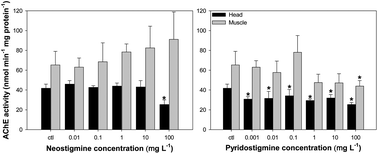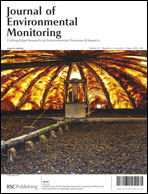Effects of anticholinesterase drugs on biomarkers and behavior of pumpkinseed, Lepomis gibbosus (Linnaeus, 1758)
Abstract
The presence of pharmaceutical residues in the aquatic environment has recently received great attention, as potential adverse effects may arise from their presence. Inhibition of cholinesterases (ChE) has been widely used as an environmental biomarker of exposure to organophosphates (OP) and carbamate (CB) pesticides. However, other widespread anthropogenic contaminants – including pharmaceutical drugs – can exert toxic effects through ChE inhibition. Studies with aquatic species have shown that inhibition of ChE is associated with behavioral changes. Bearing this in mind, this work aimed to study the effects on individual behavior and acetylcholinesterase (AChE) activity of selected tissues of Lepomis gibbosus, after exposure to the anticholinesterasic drugs neostigmine and pyridostigmine. Results revealed that neostigmine significantly decreased the activity of AChE in the head (LOEC = 100 mg L−1), but not in dorsal muscle. On the other hand, pyridostigmine significantly decreased the activity of AChE in both the head (LOEC = 0.001 mg L−1) and dorsal muscle homogenates (LOEC = 100 mg L−1). The impairment of this enzymatic form was attained at ecologically relevant concentrations (in the case of pyridostigmine, for head AChE), which is an interesting finding, specially considering that these toxic effects occurred for a pharmaceutical compound. Contrarily, there were no significant differences in the behavior of L. gibbosus in any parameter, for neither drug. These results suggest that the behavioral parameters analyzed (scototaxis and lethargy) in L. gibbosus could not be regarded as suitable markers to assess the effects of drugs such as neostigmine and pyridostigmine. In contrast, the pattern of response elicited by cholinesterasic inhibition showed the usefulness of this toxicological parameter for the assessment of pharmaceuticals in the environment, namely anticholinesterasics.


 Please wait while we load your content...
Please wait while we load your content...